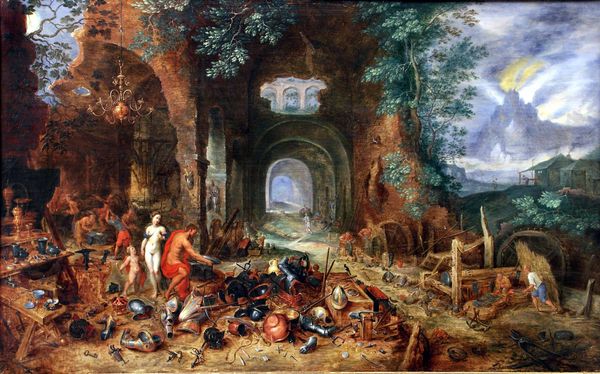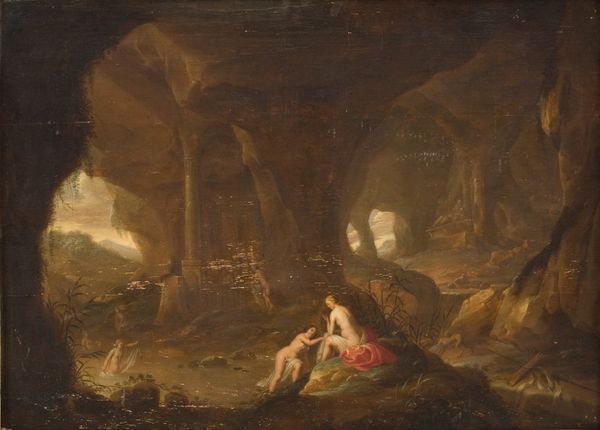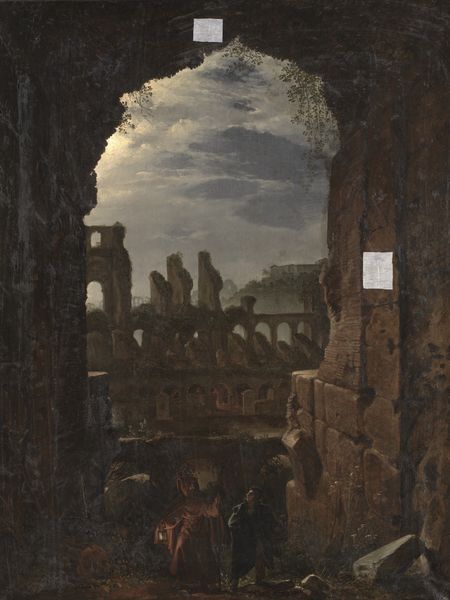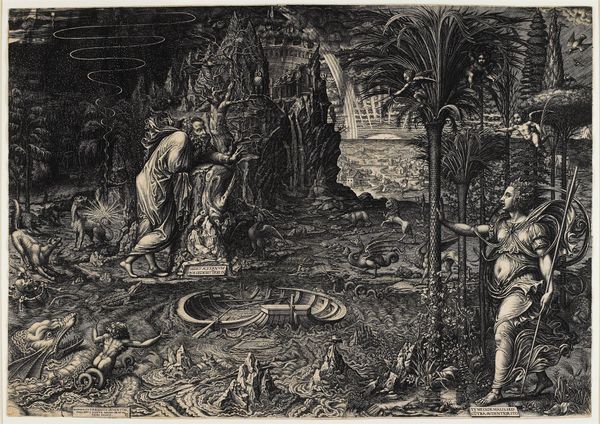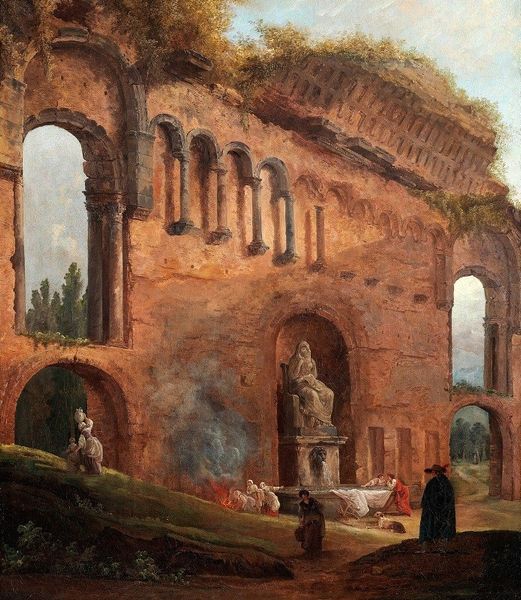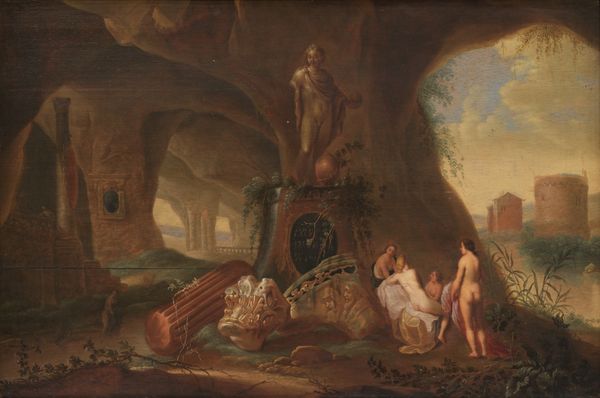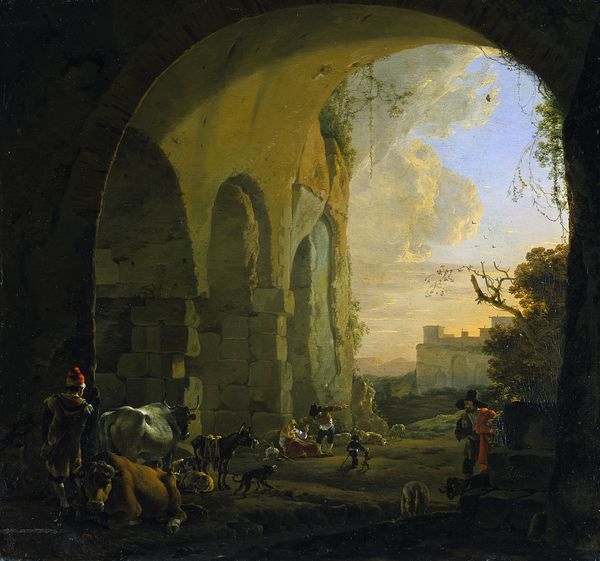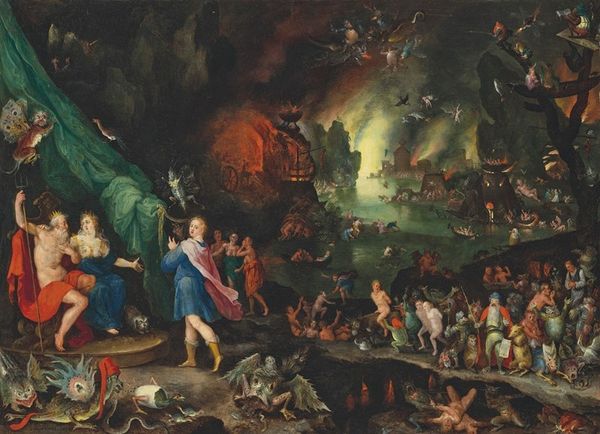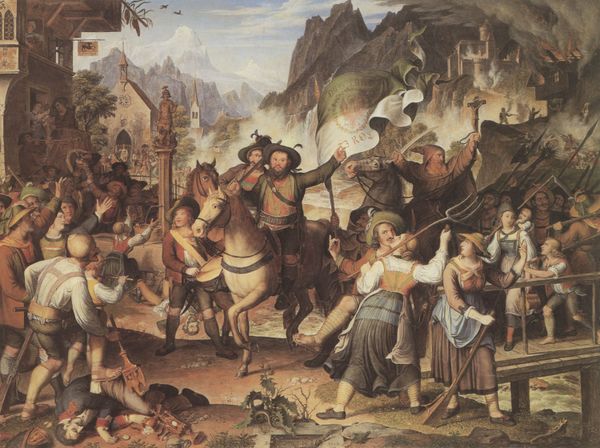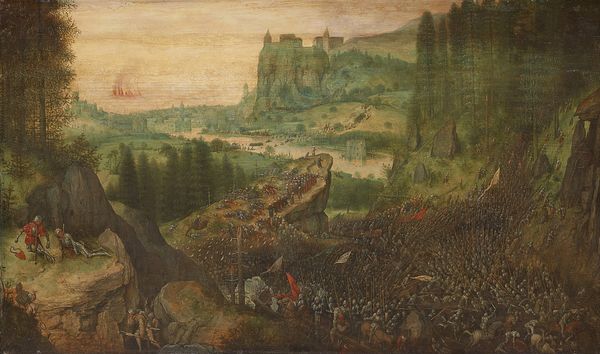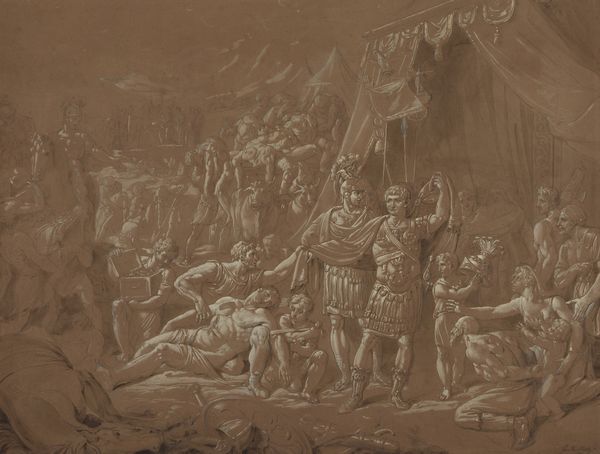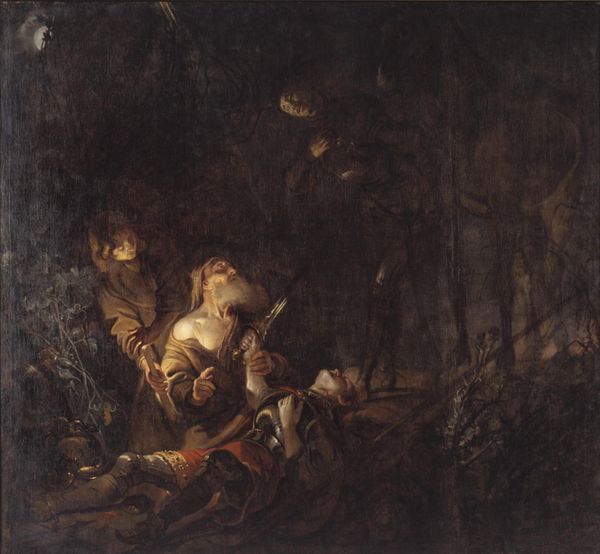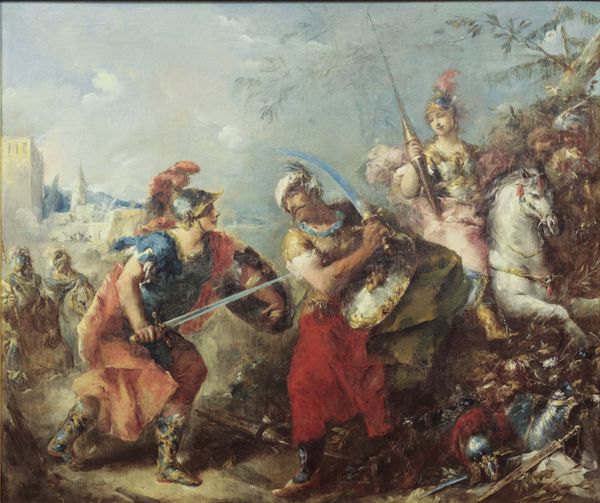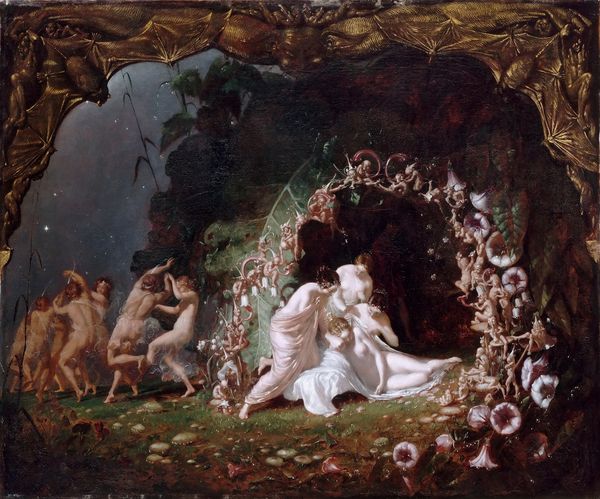
oil-paint
#
baroque
#
oil-paint
#
landscape
#
painted
#
figuration
#
oil painting
#
flemish
#
mythology
#
genre-painting
Copyright: Public domain
Curator: This piece is titled "Das Feuer," attributed to Jan Brueghel the Elder. He rendered it using oil paint and, though undated, its stylistic elements firmly place it within the Baroque period. What’s your initial response? Editor: The eye is immediately drawn into the intense activity in the foreground, then slowly travels through the contrasting dark and light tunnel that leads you to a brighter open space—it creates a really powerful sense of depth. Curator: It's fascinating to consider how the oil medium allows for that level of detail and layering to build up the space, isn't it? It's an approach characteristic of the Flemish tradition. Editor: Definitely. Seeing all this meticulous craftsmanship depicted raises the question of labor itself—who would have commissioned this and for what purpose? The scene represents Vulcan's forge. So it seems this genre-style scene that depicts mythology functions to uphold a social hierarchy that puts the Patron above labor. Curator: Precisely, this wasn’t merely a canvas to look at—it signified power and status through consumption of skilled craft, and possibly some political subtext regarding social order. Editor: Absolutely. There's an undeniable tension, too, between the mythical subject matter, rendered with these incredibly detailed ordinary-seeming laborers and all the products of this labor arrayed for our consideration in the front: an almost defiant intersection between mythology and a very concrete material world. Curator: I agree completely; and that is Brueghel's mastery at work here, in pulling together elements of classicism and everyday toil. Editor: Looking closely, even the presence of Venus seems significant here, overseeing the production line. She signifies an almost literal embodiment of value to be made, with no direct association to the labor producing it. Curator: Right. The figures working the forge aren’t individuals so much as archetypes, demonstrating the role of the artisanal tradition. The raw materiality of iron transforms into refined object, but by whose hand and to whose benefit? Editor: It is this interplay of history and material execution which underscores so much of the ongoing issues of ownership and visibility that remain relevant even today. Curator: Indeed, understanding the historical context embedded within the visual and tangible characteristics is pivotal in analyzing works like this one.
Comments
No comments
Be the first to comment and join the conversation on the ultimate creative platform.
